Mid-Ohio Food Collective (MOFC) is taking the next leap in urban farming through its "smart farm" in the Hilltop neighborhood of Columbus, Ohio. This seven-acre urban farm combines Controlled Environment Agriculture techniques, such as hydroponics and greenhouses, focusing on food security, sustainability, and community education. Led by Farm Director Trevor Horn, the project combines food production with empowering a new generation of farmers to become more resilient towards the growing agricultural challenges.
Located on a former brownfield site, the farm turned to CEA technologies like vertical farming, container growing, and hydroponics to bypass poor soil quality and limited space issues. "Our motto is, 'Make every acre count,'" Trevor explains. Using over 300 vertical towers, the farm can produce thousands of heads of lettuce in a single cycle.
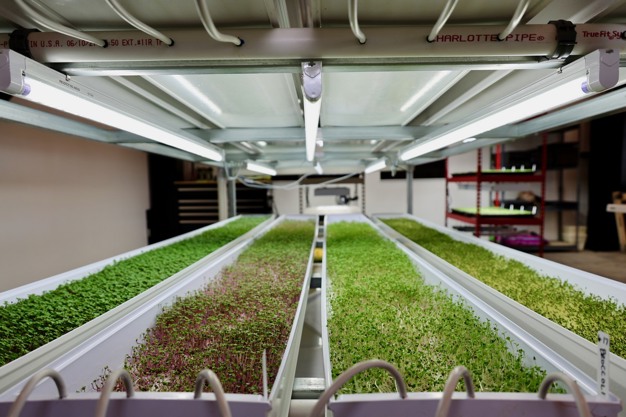
Educational greenhouses and hydroponic systems
MOFC's success lies in using hydroponic systems and greenhouse technologies. High tunnels—polyplastic-wrapped structures provided by the USDA—protect crops from unpredictable weather, while Dutch bucket systems optimize the production of crops like tomatoes, with each bucket yielding 35 to 50 pounds. By integrating hydroponics, the farm circumvents the need for long-term soil regeneration, a process that can take up to 10 years on previously developed land.
"The USDA gave a lot of urban farmers those high tunnels, but the biggest struggle is soil. Hydroponics can provide a solution, allowing urban farmers to grow efficiently and bring food directly to market," says Trevor.
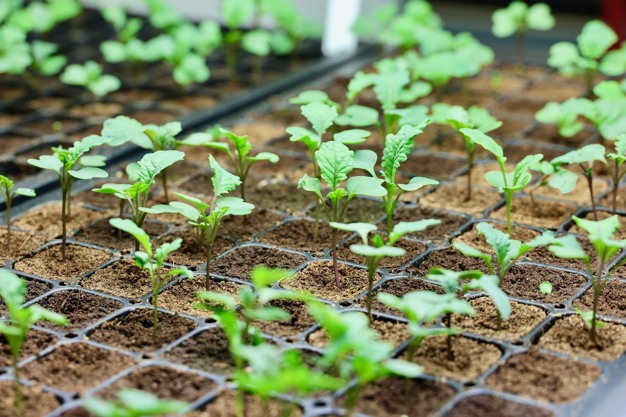
These high-tech systems not only increase yield but also promote sustainability by reducing food miles and keeping produce fresher for local communities. The farm grows a variety of crops, including cucumbers, tomatoes, lettuce, and strawberries, with notable results. In just the first few months of this year, the farm harvested over 1,000 pounds of cucumbers and hundreds of pounds of lettuce and tomatoes.
One of the most successful innovations is the farm's lettuce raft system, which can hold up to 500 heads of lettuce at a time. "Hydroponics not only provides higher yields but also conserves water—an increasingly vital resource," Trevor emphasizes. The farm's shipping container-turned-growing unit, equipped with LED lights, is another example of how CEA can allow year-round produce in urban environments.
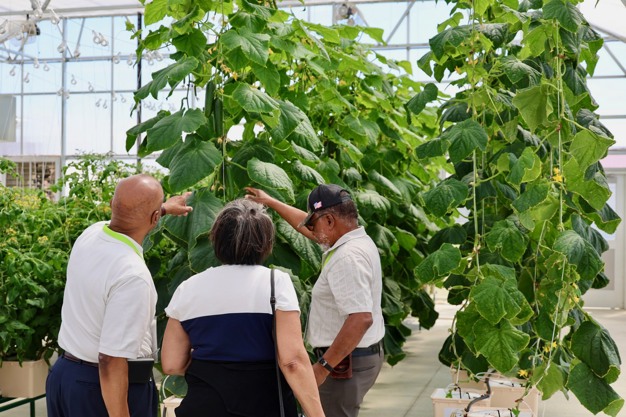
Workforce development through CEA
One of the greenhouses is dedicated entirely to training high school and post-high school students in CEA techniques. This equips students with the skills they need to enter the growing field of high-tech farming. Trevor emphasizes the importance of this mission: "We could have filled that greenhouse with one of those fully automated systems and focused just on yield. But the education piece is crucial for us because it's a huge opportunity to provide someone the skill set to go right into a controlled environment agriculture career."
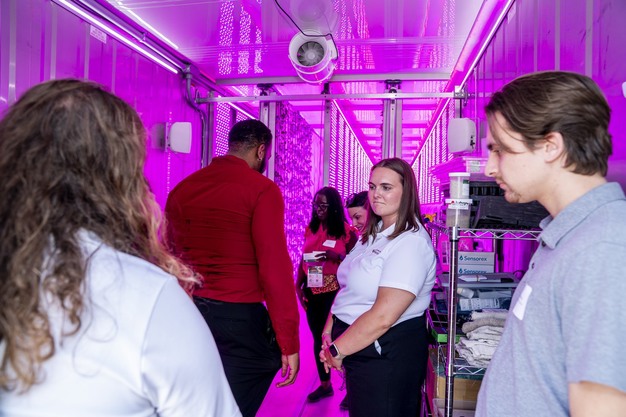
Through local partnerships in vertical farming, such as 80 Acres Farms in Cincinnati, the farm ensures students are prepared for Ohio's increasing CEA job opportunities. Students learn not only the technical skills of farming in controlled environments but also coding and automation, thanks to the farm's "farm bots"—NASA-designed machines programmed to handle tasks like seed planting and soil testing.
"My 9-year-old son got into coding through a camp, and he's learning it in school. These innovations help kids think outside the box and see the possibilities in agriculture," Trevor shares, highlighting how CEA engages younger generations and initiates interest in high-tech farming careers.
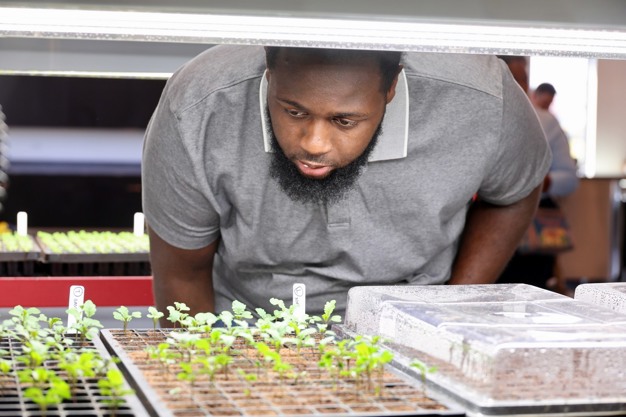
What the future might hold
With plans to expand its operations, MOFC aims to increase both its output and its educational reach. Two additional greenhouses are in development, pending funding, to extend production year-round. The farm's ability to grow greens during the cold Ohio winters using energy-efficient controlled environments is a key component of its future strategy. By minimizing the need for artificial lighting, they are trying to keep operating costs as low as possible.
"Our 'food is health' strategy is about getting fresh produce right into our neighbors' hands, reducing the time food spends out of the ground or off the vine," Trevor explains, reinforcing the farm's mission to improve access to nutritious food in local communities.
Mid-Ohio Food Collective's smart farm is more than just a place for growing food with its focus on learning and teaching. As Trevor puts it, "We're always looking at new ways to help people see that they can grow year-round, even in urban spaces like Columbus."
For more information:
Mid-Ohio Food Collective
mofc.org
Trevor Horn
Email: THorn@mofc.org
